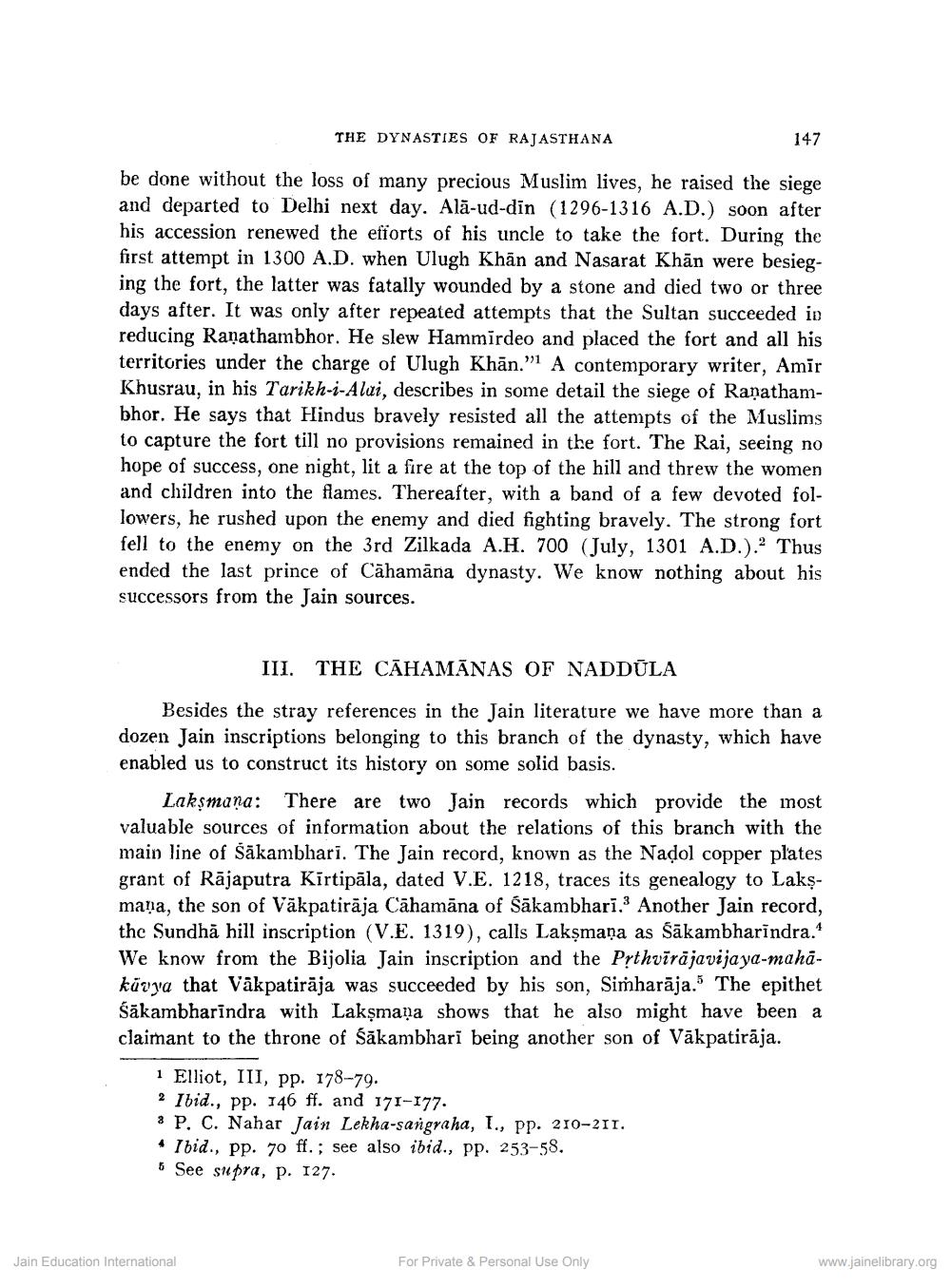________________
THE DYNASTIES OF RAJASTHANA
be done without the loss of many precious Muslim lives, he raised the siege and departed to Delhi next day. Alä-ud-din (1296-1316 A.D.) soon after his accession renewed the efforts of his uncle to take the fort. During the first attempt in 1300 A.D. when Ulugh Khan and Nasarat Khän were besieging the fort, the latter was fatally wounded by a stone and died two or three days after. It was only after repeated attempts that the Sultan succeeded in reducing Ranathambhor. He slew Hammirdeo and placed the fort and all his territories under the charge of Ulugh Khan." A contemporary writer, Amir Khusrau, in his Tarikh-i-Alai, describes in some detail the siege of Rapathambhor. He says that Hindus bravely resisted all the attempts of the Muslims to capture the fort till no provisions remained in the fort. The Rai, seeing no hope of success, one night, lit a fire at the top of the hill and threw the women and children into the flames. Thereafter, with a band of a few devoted followers, he rushed upon the enemy and died fighting bravely. The strong fort fell to the enemy on the 3rd Zilkada A.H. 700 (July, 1301 A.D.)." Thus ended the last prince of Cähamana dynasty. We know nothing about his successors from the Jain sources.
III. THE CAHAMĀNAS OF NADDŪLA
Besides the stray references in the Jain literature we have more than a dozen Jain inscriptions belonging to this branch of the dynasty, which have enabled us to construct its history on some solid basis.
Laksmana: There are two Jain records which provide the most valuable sources of information about the relations of this branch with the main line of Sakambhari. The Jain record, known as the Nadol copper plates grant of Rajaputra Kirtipāla, dated V.E. 1218, traces its genealogy to Laksmapa, the son of Väkpatirāja Cähamäna of Säkambhari. Another Jain record, the Sundha hill inscription (V.E. 1319), calls Lakṣmaṇa as Sākambharindra." We know from the Bijolia Jain inscription and the Pṛthvirajavijaya-mahākavya that Vakpatirāja was succeeded by his son, Simharaja. The epithet Säkambharindra with Laksmana shows that he also might have been a claimant to the throne of Sakambhari being another son of Väkpatirāja.
Elliot, III, pp. 178-79.
2 Ibid., pp. 146 ff. and 171-177.
P. C. Nahar Jain Lekha-sangraha, I., pp. 210-211.
4 Ibid., pp. 70 ff.; see also ibid., pp. 253-58.
See supra, p. 127.
147
Jain Education International
For Private & Personal Use Only
www.jainelibrary.org




